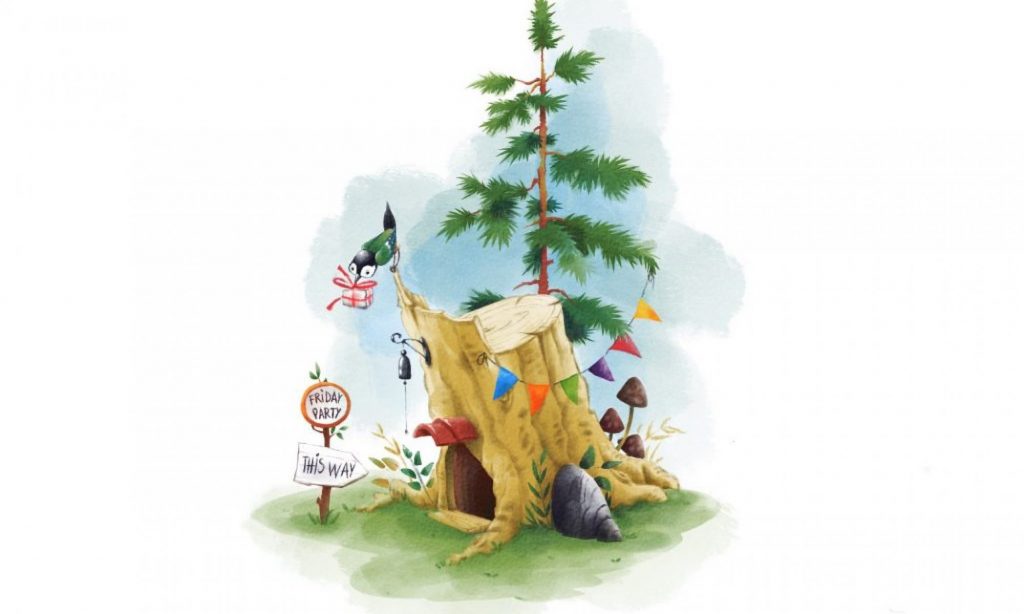By the spring, I was teamed with Hsin (the director and initials idea’s author) and Limbo to work on a film ‘Jumping to the Unknown‘.
The film will represent the Abstract Showcase of the upcoming London International Film Festival (27 November- 6 December).
The produced animation is a combination of two traditional technics: stop-motion and digitally drawn 2D frame by frame.
In the beginning, I would like to divide the work experience on the film into two parts: the first one is pre-production, that happened during the spring, right before the summer holidays. The second part, post-production got around the month from October to November.

By and large, over the first part of the production, we had a lot of meetings and discussions about and around the story. It was a lot of teamwork, where each of us commits to the inquiries about the narrative itself and about the technical part of our future film. We tried to predict what kind of challenges we will meet and how to avoid them by meticulously schedule each step.

Besides all that, I worked on visual content for the project. For this reason, I had plenty of conversations with our director Hsin about what worlds look like, what the difference between birds, how we are going to show it understandably so that it will not leave any doubts. I draw images which then use to produce storyboards as well as a presentation for the client.

Because of the strictly limited time of the final trailer, that should be no more than 1 min; the story changes drastically throughout the pre-production stage. The crucial point was to make it shorter, while do not lose the initial idea. Therefore, I draw and redraw a lot of pictures, either making minor changes or draw whole sequences from scratch. After every meeting with either client or course leads or invited industry professional, there was a lot of work and adjustments to make.

I found that throughout the pre-production step, it is quite crucial to make clear visuals and present the story in the right way and be confident about technical nuances to avoid future misunderstanding with the clients.
Even though I had a quite distinguish role in the first part of creating the film, I would say that overall, it felt more like a team effort.
However, in contrast to the first stage of production, the next step was an absolutely different experience.

For this part, our director decided not to distribute roles between us (a stop-motion animator, an editor, 2D animator, colourist, etc.), but sections of the film instead. So, each team member got his own part to work on from the very beginning until the sequence is absolutely finished. I got the first 10 seconds of animation.

We got much artistic freedom, however, were provided with comprehensive instructions about what kind of actions Hsin would love to see.

Firstly, when we got access to the studio, I helped Hsin to set up the shooting space, by installing a camera, lights and computer for animating our stop-motion backgrounds. We shoot fist sequence in two days. For the first day, it was a lot of experimenting, cutting paper, pros and cons about which method will be more comfortable and faster.

Following, I worked in Photoshop, editing all images for my sequence, by removing unnecessary shadows and adjusting colours and lights.

The next step was animation. Firstly, the background itself. I used our animatic with sounds to roughly time whole clip. I manipulated with images in Photoshop to add some additional frames to make more smooth flight of the platform without the necessity to go to the studio to shoot additional images.
When I was happy with the result, I started working with the main character, the Red Bird.
While on the Red Bird animation, I got approval from the first pass, conversely, it took me a couple of tries to get the right movements for White Birds. I even made a test animation for how they are going to appear on the platform.
And finally, COLOURING stage: we got a colouring palette and list of tools that we should use from the director, so it was a straightforward work.


In the end, I want to add that in spite of it was a challenging project in point of time, however also a great experience. Nevertheless, for sure, a real pleasure to work with Hsin and Limbo.
